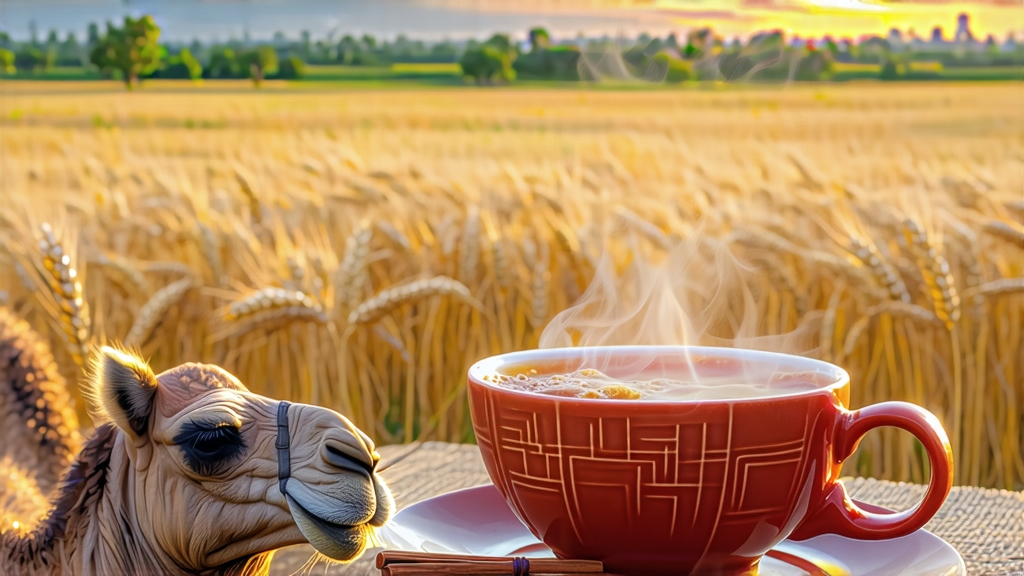
If green tea is the fresh spring breeze in a Chinese garden, Fu brick tea (Fú zhuān chá) is the mellow autumn twilight that has travelled a thousand years across deserts and mountains. Compressed into dark, chocolate-brown bricks whose cross-sections sparkle with tiny golden grains, this sub-category of Hunan dark tea was once the anonymous currency that bought horses, wool and even peace along the Silk Road. Today it is celebrated by collectors who cellar it like vintage wine, by herders on the Tibetan Plateau who still boil it with yak butter, and by sommeliers in Shanghai who pair its cocoa-like sweetness with dark chocolate. To understand Fu brick is to watch a humble leaf transform into a living time-capsule, its flavour deepening each year while its probiotic “golden flowers” quietly bloom.
-
Historical footprints wrapped in straw
Fu brick tea first appeared in the 1860s in Jingyang county, Shaanxi, when tea merchants found that the humid summer journey to the western frontiers encouraged a spontaneous yellow mould on the brick surface. Instead of ruining the tea, the mould—later identified as Eurotium cristatum—imparted a mellow, fruity aroma that nomads loved. Demand exploded: by 1900 more than 40,000 tonnes left Hankou railhead every year, lashed to camel saddles or floated down the Yellow River. Caravans carried it to Lhasa, Kashgar and even Moscow, where Russian tea tasters coined the term “brick tea” and blended it into their samovars. During the Second World War the Nationalist government taxed Fu bricks to purchase Soviet arms, literally trading tea for tanks. When the Communists nationalised the industry in 1953, production shifted south to Hunan’s Anhua county, whose misty mountains and large-leaf cultivars proved ideal for the post-fermentation process. Today Anhua supplies 90 % of global Fu brick output, yet the old Shaanxi workshops survive as living museums where visitors can still see camel bells hanging above Qing-dynasty brick presses. -
From leaf to brick: the craft of controlled fermentation
Fu brick production follows a meticulous six-step choreography that spans almost a year.
Withering: Plucked in late April, the raw material is Anhua’s local “Yun Tai Da Ye” cultivar, whose leaves are broader than a man’s palm and thick enough to withstand months of microbial work. The leaves are spread on bamboo racks inside draughty lofts for 6–8 hours, losing about 10 % moisture and developing a grassy fragrance.
Fixation: A 280 °C wok toss lasting three minutes deactivates oxidative enzymes, but the operator leaves the centre slightly underdone; residual enzyme activity is essential for the later “golden flower” phase.
Rolling: The hot leaves are immediately twisted into tight cords that will help the brick hold its shape under tons of pressure.
Piling: Here Fu brick diverges from other dark teas. The rolled leaves are heaped 1 m high under wet cotton cloth for 12 hours, initiating a light aerobic fermentation that softens bitterness.
Steaming & pressing: The tea is steamed for 30 seconds, then tipped into rectangular iron moulds lined with hand-woven straw. A 30-ton hydraulic press compresses the mass for six minutes, squeezing out air pockets that could harbour unwanted moulds.
Fermentation room: The bricks are now stacked like library books in a climate-controlled chamber kept at 28 °C and 75 % relative humidity. Over the next 12–20 days Eurotium cristatum spores germinate, forming visible yellow specks the size of millet grains—nicknamed “golden flowers” (金花, jīn huā). Masters monitor the colony daily; too dry and the flowers fail, too humid and toxic moulds appear. When the floral, apricot-like aroma peaks, the bricks are moved to drying tunnels where 45 °C air halts microbial activity and locks in the flavour. The entire cycle, including a final month of resting, takes 300 days, making Fu brick the longest-crafted tea in China.
- The golden flower: nature’s flavour alchemist
Eurotium cristatum is not decorative. It excretes enzymes that convert polyphenols into theabrownins, producing a ruby liquor and a silky mouthfeel. Chinese Academy of Sciences studies show that golden-flower bricks contain up to five times more statin-like compounds than plain dark tea, explaining historical anecdotes that border Tibetans never suffered altitude-induced hypertension